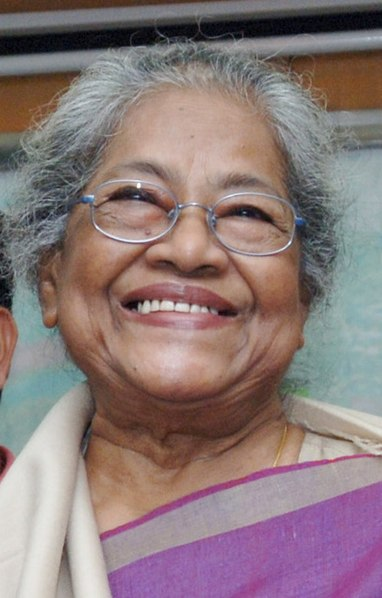
Arpita Singh
Arpita Singh stands as a pioneering figure among women artists in India. She is renowned for her vibrant figurative paintings, often based on mythology or with women as the focus.
Biography of Arpita Singh
Arpita Singh was born in 1937. She pursued her education in fine arts at Delhi Polytechnic, and later, she dedicated four years of her life to designing textiles at the government-sponsored Weavers’ Service Centre. During her tenure there, she delved into the traditional techniques of embroidery, including the Bengali style called Kantha.
Arpita Singh's artistic journey can be broadly divided into three distinct phases. The early 1970s marked her formative period, characterized by surrealist landscapes that showcased pieces like "Beginning of the Festival." From the mid-1970s to the early 1980s, she detours into abstraction. However, her most enduring and impactful phase emerged from the mid-1980s to the present day, when she focused on narrative scenes that heavily centered around female subjects.
Singh received numerous prestigious awards and honors, showcasing the recognition and acclaim she has garnered for her exceptional artistic contributions. In 1991, she was bestowed with the Parishad Samman from the Sahitya Kala Parishad, New Delhi, followed by the Kalidas Samman from Bhopal in the same year. In 2011, she was conferred with the prestigious Padma Bhushan, a high civilian award in India. In 2014, Singh was awarded a fellowship at the esteemed Lalit Kala Akademi.
Currently, the artist resides and continues to create her masterpieces in New Delhi, India.
Arpita Singh's Art Style
Arpita Singh is celebrated as both a figurative artist and a modernist, seamlessly weaving together the rich tapestry of traditional Indian art forms and aesthetics, such as miniaturist painting and various forms of folk art.
Deeply concerned with the experiences and movements of women, not only within her country but also on a global scale, Singh's canvases embody a vivid tapestry of emotions and connections that exchange with these subjects, providing a topographical view of the ongoing communication she maintains with them. She fearlessly brings attention to pressing issues faced by contemporary women, shedding light on themes of hatred, social injustice, and more. In some of her paintings, women are portrayed in the nude, but her works do not have sexual overtones and instead portray the vulnerability of women.
Years:
Born in 1937
Country:
India, Baranagar, Bengal Presidency (now West Bengal)